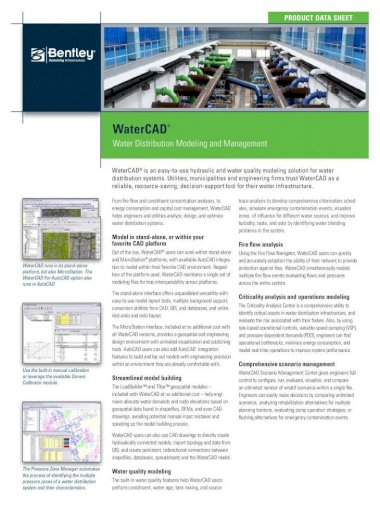
- #Watergems shapefile import how to
- #Watergems shapefile import driver
- #Watergems shapefile import pro
To import them as closed polylines, select Import Polygons As Closed Polylines. By default, polygons are imported as polygon objects.
#Watergems shapefile import how to
#Watergems shapefile import pro
The Quick Start tutorial will help first-time users become familiar with the core set of InfoWater Pro features and should be used as a. If using version 9.1, double-click Batch Project. The Quick-Start tutorial is designed for first-time users of InfoWater Pro and provides a guided tour to core commands and functions used to create, run, and analyze a model in InfoWater Pro.
#Watergems shapefile import driver

For more information, see Fundamentals of a shapefile's coordinate system. It's highly recommended that you define the shapefile's coordinate system now however, you can postpone this step until a later time. Select, import, or define a new coordinate system.Click Edit to define the shapefile's coordinate system.Click the Feature Type drop-down arrow and click the type of geometry the shapefile will contain.Click in the Name text box and type a name for the new shapefile.Click the File menu, point to New, then click Shapefile.Select a folder or folder connection in the Catalog tree.After the new attributes have been added as part of the shapefile, you can delete the default column if you decide you don't want to use it. Add the appropriate attributes to your shapefile.

In the Import Location dialog box, under Files Of Type, select shp.

sdf file. To import from SHP Click Insert tabImport panelMap Import. Export pressure pipe network to esri shp file civil 3d hot Export pipe network civil 3D (2017) to shapefile - Esri I am trying to export a pipe network 3D drawing into shapefile,and I am using this following method Use ExporttoSDF command,Start a new drawing,then use MapImport to import that. For shapefiles, an integer column named Id is added as an attribute. ESRI SHP files store both geometry and attributes (data) for features. Because it must contain at least one attribute column, ArcCatalog adds a default column to the shapefile when it is created. After creating the item, define its attributes by right-clicking it in ArcCatalog and clicking Properties. The process of defining the new shapefile's attributes is separate from creating the shapefile itself. If you choose to define the shapefile coordinate system later, it will be classified as Unknown until then. You can also define the coordinate system of the shapefile. WaterGEMS and WaterCAD can import and export EPANET files, as well as shapefiles and some other data formats, but they require licenses, unlike GHydraulics. However it does have a few bugs and can be difficult to use. These properties can't be modified after the shapefile has been created. The plugin GHydraulics for QGIS 1.8 will go from a shapefile (or any vector that QGIS supports) to an EPANET. When you create a new shapefile, you must define the types of features it will contain, whether those features will represent routes (m-values), and whether those features will be three-dimensional (z-values). You can create new shapefiles in ArcCatalog or by using the Create Feature Class tool.


 0 kommentar(er)
0 kommentar(er)
